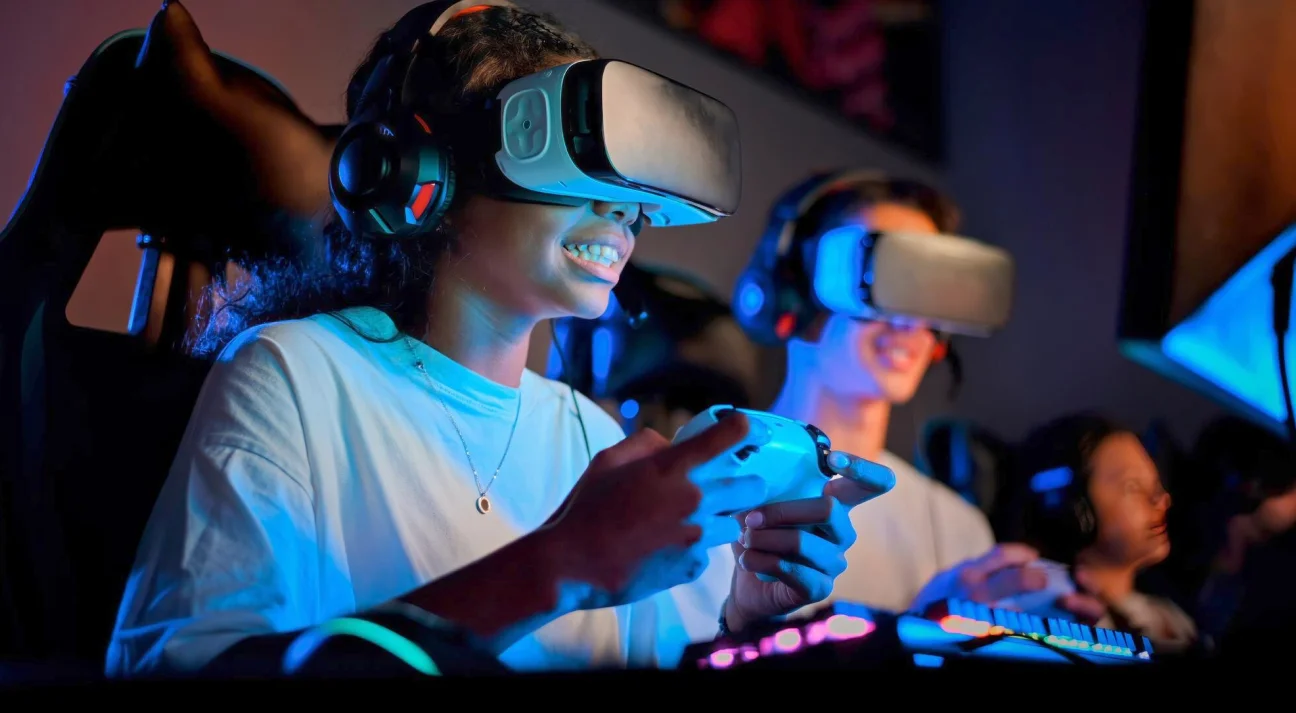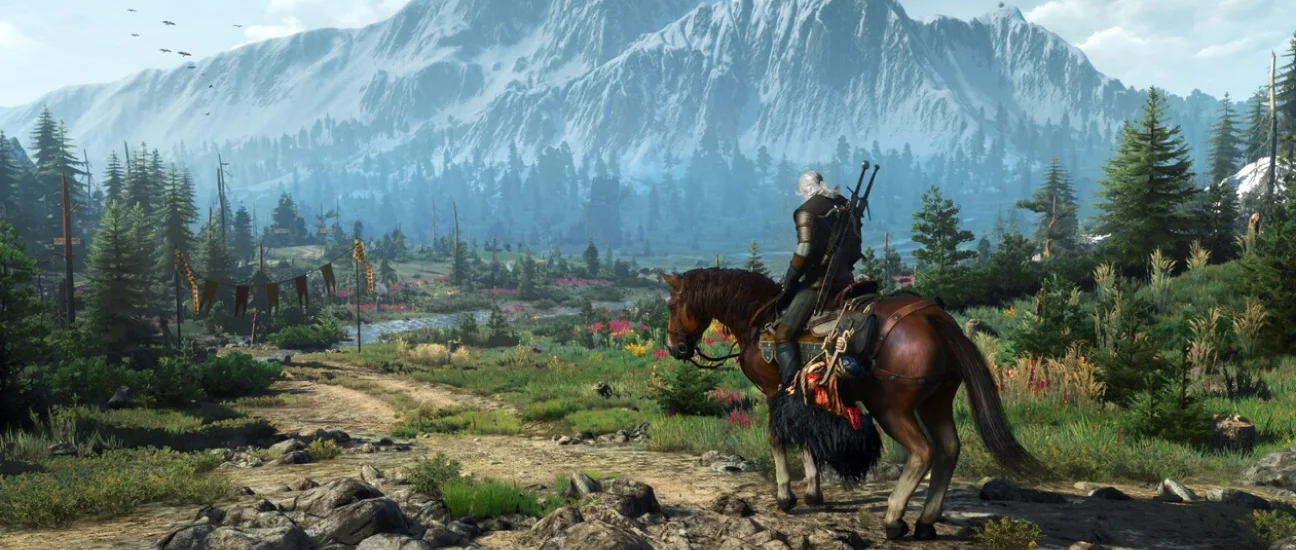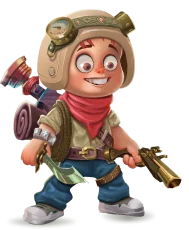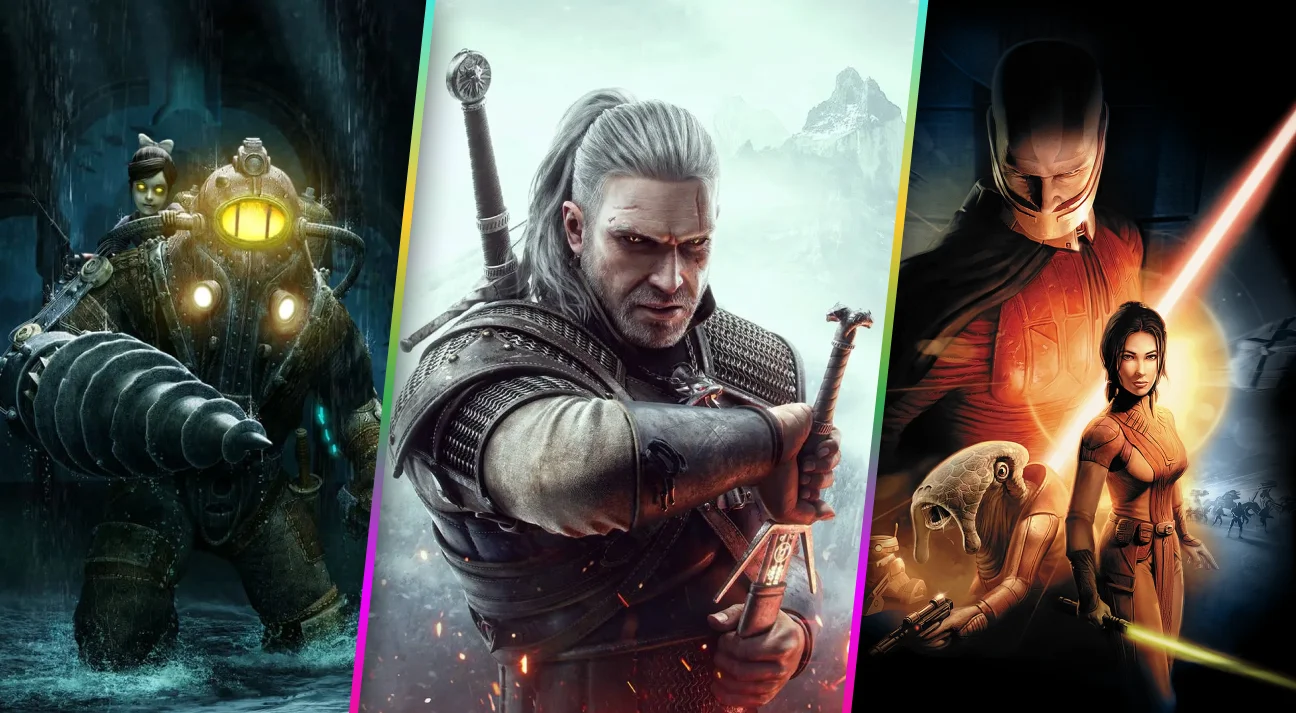
How Generative AI is Revolutionizing the Gaming Industry?
Generative Artificial Intelligence (AI) is reshaping the gaming landscape, revolutionizing how games are developed, experienced, and enjoyed. This blog explores the pivotal role of Generative AI in transforming the gaming industry, from enhancing game design processes to personalizing player experiences.
From the early days of simple pixels to today’s immersive virtual worlds, the gaming industry has continually pushed the boundaries of technology to create captivating experiences for players around the globe. At present, Generative AI, with its ability to create content autonomously, is revolutionizing game development in profound ways.
No longer confined to static levels or scripted events, games powered by generative AI possess a dynamic, ever-evolving quality that offers players unique and unpredictable experiences with each playthrough.
But what does this mean for players? How will the use of Generative AI in game development disrupt the industry and bring new changes? With generative AI, games will be different every time you play. So, no more boring repeats—each time you hit start, it’s a brand-new adventure waiting to happen.
In this blog, we will cover it all! We’ll tell you how generative AI in game development works and how it’s changing the games we love to play.
What is Generative AI?
Generative artificial intelligence is a technology that can create unique content on demand. It produces content in various formats, including text, images, synthetic data, audio, video, voiceovers, etc. Its algorithms are trained to create content from a large dataset that shares similarities with the data it was trained on.
Generative AI models use neural networks to learn and generate new content. Neural networks are machine learning algorithms that are inspired by the human brain structure and execute similar tasks.
Among its models, the generative adversarial network (GAN) is the most used model. It has two neural networks: a generator and a discriminator. The generator creates new content, while the discriminator tries to distinguish between real and generated content. Through a process of competition and feedback, the generator learns to create realistic content that humans can relate to and find reliable.
How Generative AI is Shaping the Gaming Industry?
Generative AI game development allows developers to create vast, dynamic, and procedurally generated game worlds. Developers can avoid designing game aspects manually and use AI algorithms to generate content such as landscapes, levels, and quests to make the game more entertaining.
The approach enables games to offer virtually limitless replayability and adaptability, as each playthrough can present new challenges and experiences.
According to the report of Market Research.Biz, the market size for generative AI in gaming is projected to hit the mark of USD 7,105.4 million approx by the year 2032. It will achieve a significant increase from its value of USD 922.0 million in 2022. The growth may occur at a robust compound annual growth rate (CAGR) of 23.3% during the forecast period spanning from 2023 to 2032.

At present, game development companies are using artificial intelligence in production phases to assist in game content conceptualization. However, experts predict that generative AI will expand its role into production and help develop characters, dialogues, and environments for the game. They estimate that within the next 5 to 10 years, generative AI will take on over 50% of game development tasks.
Upcoming Generative AI Trends Contributing to the Growth of the Gaming Industry
As we look ahead, several upcoming generative AI trends are poised to significantly contribute to the growth and evolution of the gaming industry. These are the most promising ones:
Procedural Content Generation (PCG)
PCG will automate game content creation, including levels, landscapes, textures, and narratives. It will speed up the process and reduce the manual labor and time required to design and develop game elements. Development can also generate vast and diverse game worlds with minimum effort.
Moreover, they can design infinitely scalable content that adapts to player interactions and exploration, providing endless replayability. PCG generates random yet relatable content using its algorithms while ensuring no two playthroughs are the same. This way, players encounter new challenges, environments, and experiences with each play session.
It will create dynamic narratives, quests, and dialogue trees according to player choices and actions, offering emergent storytelling experiences that evolve on each stage as players progress through the game.
AI-Driven NPCs and Adversaries
AI-driven NPCs can exhibit more realistic behaviors, reactions, and decision-making processes, making game worlds feel more immersive and lifelike. They can adapt dynamically to changing game conditions, player actions, and environmental factors. NPCs can respond intelligently to player strategies, creating dynamic and challenging gameplay experiences that evolve.
Additionally, AI-powered adversaries can dynamically adjust their difficulty level based on player skill, performance, and progression. NPCs participate in narrative events, engage in meaningful dialogue, and influence plot developments.
Personalized Gameplay Experiences
AI video game generators provide a personalized experience by creating game levels, items, narratives, quests, and the player’s style and skill level. The game changes according to player preferences, and each player can play the same level in a different environment.
Also, generative AI analyzes player behavior and adapts gameplay experiences in real-time to provide appropriate challenges, rewards, and content. In AI-generated games, players can adjust difficulty levels, pacing, and content generation algorithms.
Realistic Graphics and Animation
Generative AI in game development automates the creation of 3D models, textures, and animations, reducing the time and resources required for asset creation. Along with it, Gen AI can effortlessly generate multiple visual game assets with diverse styles, themes, and aesthetics at scale that help create expansive game worlds with vast landscapes, detailed environments, and diverse characters.

By simulating natural phenomena, physical dynamics, and life-like character movements, AI-generated graphics and animations create an immersive and believable gaming experience for players. AI graphics and animation tools enable players to personalize their gaming experience by creating unique character designs, custom avatars, and personalized content.
Also read: Stylized vs Hyper-Realistic: Which is Better for Game Art Design
Streamline Game Development Process
Generative AI-powered design tools can assist developers in prototyping, iterating, and optimizing game mechanics, balancing difficulty levels, and playtesting game scenarios. These tools analyze player data and feedback to generate customized content and adaptive challenges, improving player engagement and retention.
Gen AI also automates game-testing processes by simulating player behavior, identifying bugs, and optimizing game performance. AI-driven QA tools can detect gameplay issues, balance discrepancies, and provide valuable insights to developers, improving overall game quality and stability.
Visual Enhancements
Gen AI algorithms allow the adjustment of graphics settings based on hardware capabilities, screen resolution, and performance requirements. It ensures optimal visual quality and performance on a wide range of devices, from high-end gaming PCs to mobile devices.
It enhances the quality of textures and models by upscaling low-resolution assets or generating high-resolution versions from scratch. It results in sharper details, smoother surfaces, and more lifelike character models, enhancing visual fidelity and immersion.
Adaptive Difficulty
Gen AI-generated games can analyze player behavior and performance data to create profiles of individual players or player segments. By understanding how players interact with the game, AI can tailor the difficulty settings to match each player’s skill level and preferences.
In games where the difficulty is influenced by enemy encounters, generative AI can develop enemies with varying attributes, like health, damage output, and behavior patterns. It allows the game to adapt to the player’s skill level by adjusting the strength, tactics, enemy density, obstacle placement, and resource distribution to maintain an optimal level of challenge.
Read More: How Did the Gaming Industry Evolve with Time and Become Popular?
Challenges Associated with the Implementation of Generative AI in Games
Implementing generative AI in games presents several challenges that developers must navigate to ensure successful integration and optimal performance. These challenges include:
- AI-generated games can be computationally intensive, especially when dealing with complex game environments or large datasets. Performance may be impacted negatively if the game engine and hardware infrastructure do not support the computational demands of Gen AI.
- Gen AI models demand large amounts of training data to analyze patterns and learn. It can be challenging to acquire and curate relevant datasets for training AI models in the context of games, especially for games having unique or proprietary content.
- AI-generated content must not only fit within the constraints of the game world but also exhibit diversity and creativity. Balancing the AI’s ability to generate novel content while adhering to game design principles and player expectations is a delicate task.
- Overfitting, where the AI learns to replicate existing content too closely, and generalization, where the AI struggles to create diverse and coherent content, are common challenges.
- Poorly implemented AI-generated content can feel repetitive, uninspired, or out of place, leading to diminished player enjoyment.
- AI-generated content may inadvertently perpetuate biases or stereotypes present in the training data if game developers fail to mitigate biases in AI-generated content.
- Generative AI should complement the game’s core mechanics and design principles rather than detract from them.
Concluding it all, the role of generative AI in transforming the gaming industry cannot be overstated. From enhancing procedural content generation to personalizing player experiences, generative AI is revolutionizing how games are created, played, and enjoyed.
However, you must hire game developers to leverage advanced AI algorithms skillfully. Professionals can create dynamic and immersive gaming experiences that adapt to each player’s preferences and skill level, fostering greater engagement and replayability.

Why Choose 300Mind for Generative AI Game Development?
300Mind stands out as a premier choice to avail of game development services with Generative AI. Our unparalleled technical expertise and innovative approach help us create engaging and stunning games using AI algorithms.
Our skilled professionals have a deep understanding of various generative AI techniques, including deep learning, reinforcement learning, and procedural content generation. They can develop sophisticated AI algorithms that generate game content like levels, characters, quests, and narratives tailored to each player’s unique preferences and playing style.
Our technical proficiency extends to the optimization and scalability of AI algorithms, ensuring that they can run efficiently on various gaming platforms without compromising performance.
Whether it’s deploying AI models on consoles, PCs, mobile devices, or cloud servers, we have the expertise to maximize computational resources and minimize latency, delivering seamless and immersive gaming experiences to players worldwide.
FAQs
Through techniques like reinforcement learning, neural networks, and deep learning, AI algorithms can be trained to master a wide variety of games, from classic arcade games to complex strategy or multiplayer titles. AI can play the game, learn from experience, adapt strategies, and optimize decision-making processes.
Games like Minecraft, No Man’s Sky, Rogue Legacy, Spelunky, AI Dungeon, Prom Week, etc., are some of the partially Gen-AI games. These games are not fully Gen-AI-developed games, but they have used AI-generated content and procedural generation.
Generative AI tools like Unity ML-Agents, DeepMind Lab, NVIDIA GANverse 3D, OpenAI MuseNet, DeepTest, Pix2Pix, TensorFlow, PyTorch, etc., are mostly used to create games. However, the choice of tools depends on the specific requirements of the project, including content type, the desired level of realism, and the available development resources.








